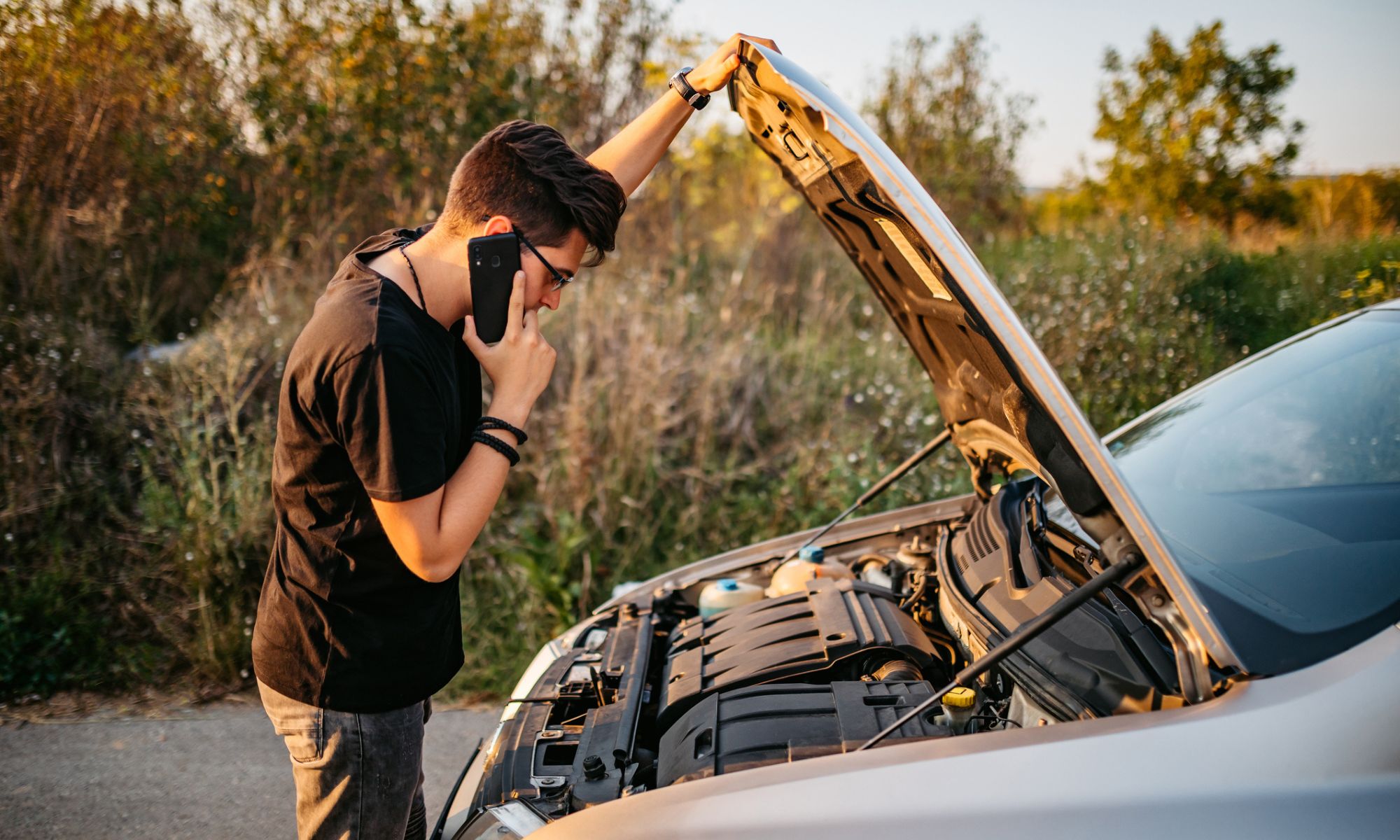Why Is My Car Sputtering?

With the colder months winding down, it is the perfect time to take care of any overdue maintenance tasks or repair any issues on your vehicle before spring. Whether you are pulling your vehicle out from winter storage or simply starting to drive it more, you might find issues that arose during winter.
A sputtering engine is one of the most common issues car owners face and is a repair that needs to be done as soon as possible to reduce the chances of larger engine damage. Knowing what can cause an engine to sputter will give you a better idea of what might be wrong with your engine, but having a trusted mechanic diagnose the issue is always recommended.
What Causes a Car’s Engine to Sputter?
There are many different reasons that a car’s engine might sputter or have a hard-start condition. An engine sputter can happen during start-up, idling, or driving and is usually accompanied by a check engine light. A hard-start condition refers to an engine having a hard time starting when turning the vehicle on. These conditions can be caused by a variety of problems but will usually center around the three main components your engine needs to function: air, fuel, and spark.
Your engine uses a specific ratio of air and fuel to create a mixture that ignites with the help of your spark plug to keep your engine running smoothly. When one of these components is malfunctioning, it can cause your engine to run rough and inefficiently, causing drivability issues and poor fuel economy. Let’s take a closer look at common reasons for a sputtering engine
1. Bad Spark Plugs
The most common cause of a sputtering engine is bad spark plugs. The spark plugs in your vehicle are what create the electric spark to ignite your air and fuel mixture. A spark plug can fire up to or more than 400 times per minute, depending on the engine. These microexplosions create carbon residue, which can get left behind on your spark plugs. Over time, this can build up and cause your spark plugs to foul out, meaning they can no longer create a spark. This results in a cylinder being unable to fire, causing a misfire condition which causes an engine to sputter and your check engine light to illuminate.
To remedy this issue, the spark plug will need to be replaced. This is a great chance to do all of your spark plugs to ensure your vehicle is well-maintained.
2. Catalytic Converter Needs Replacing
A catalytic converter is a component of your exhaust system that helps to filter out harmful byproducts in the exhaust gasses. It contains a chamber, or catalyst, that converts the harmful byproducts into safe gasses, such as steam. Over time, or due to bad gas, a catalytic converter can become clogged, causing your exhaust system or exhaust manifold to become restricted. Your engine relies on the exhaust system to work efficiently in getting these gasses out, so when it becomes clogged or causes a failing catalytic converter, you can experience backfiring and engine sputtering.
3. Clogged Fuel Injectors or Fuel Filter
The fuel system on your vehicle consists of various parts scattered from the engine to the rear of your vehicle that work in unison to deliver fuel to the engine. Most fuel systems will include a fuel tank, lines, filters, injectors, and pumps, all of which can be subject to malfunction. The fuel filter in your vehicle needs to be replaced every 3 years or every 30,000 miles, whichever occurs first. The fuel injectors in your engine usually never have to be replaced and can be cleaned if they ever become clogged. When either of these components becomes clogged, it will restrict the amount of fuel that can get to your engine, causing a car to sputter.
4. Bad Oxygen Sensor
A lesser-known component of your exhaust system is the oxygen sensor. This sensor reads the oxygen levels in your exhaust and sends these readings to your car’s computer to adjust your air and fuel ratio. Much like a spark plug, carbon deposits can build up on your oxygen sensor and cause it to foul out, skewing the readings to your computer and causing an engine sputter. Replacing an oxygen sensor is a fairly quick and easy fix and will usually be prompted by a check engine light.
5. Your Car Is Out of Gas
When your car is either running low on gas, it can start to sputter. This is due to the fuel pump being unable to supply your engine with enough fuel for an ideal air-to-fuel ratio. This usually happens when the car is just about to run out of gas.
6. Bad Gaskets or Seals
While a little less common, bad gaskets or seals can cause several different issues with your vehicle, including sputtering issues. This can be related to gaskets on your intake manifold, cylinder heads, or any other area where air enters your engine.
7. Malfunctioning Airflow Sensor
The mass airflow sensor, or MAF sensor, is an integral part of your engine as it meters how much air is coming into your engine to adjust the amount of fuel to let into the combustion chamber. Essentially, it ensures you have the correct air-to-fuel ratio to properly run your engine. As this sensor goes out or malfunctions, it can send the wrong signal, altering the air-to-fuel ratio and causing your engine to sputter.
8. Ignition Issues
Lastly, ignition issues are one of the most popular problems that cause sputtering in your vehicle. Since your ignition is responsible for your sparkplugs firing at the right time to create combustion, when this malfunctions, you can guarantee that you will have sputtering issues.
Caring For Your Car With Endurance
Keeping up with routine maintenance can help avoid car sputtering issues by following the recommended service intervals for your vehicle. While this is a great way to keep your car running its best, sometimes parts fail, leaving you to foot the bill if you do not have a warranty. A vehicle protection plan from Endurance can help cover the costs of unexpected auto repair bills and keep your car running great all year round.
With plans starting as low as just $79 per month, Endurance offers a wide variety of coverages for you to choose from. No matter which plan you choose, you will get the same great standard services, including 24/7 roadside assistance, rental car reimbursement, and trip interruption protection. All new Endurance customers will also get a full year’s worth of FREE Elite Benefits, which include additional perks and benefits such as tire repairs and replacements, key fob replacements, collision discounts, and up to $1,000 in total loss protection. A small activation fee applies.
We stand behind our auto protection plans with a 30-day money-back guarantee. Unlike many other warranty options, you will have the freedom to have your car repaired at any ASE Certified mechanic or repair shop. Keep your car maintained with an Endurance protection plan by calling our award-winning customer care team at (800) 253-8203 for a free, no-obligation quote, or shop online today.
Want to learn more about your vehicle? Check out the Endurance blog for expert-written articles on car maintenance tips, vehicle buying guides, and extended warranty coverage comparisons.













Larry Witherspoon Jr. is a co-founder and Executive Director of the Automotive Training Center. Larry has held multiple leadership positions in the U. S. Navy and with various Fortune 100 companies. In addition to his business experience, Larry grew up understanding the difficulties all young men face becoming adults especially those that come from challenging circumstances. He has taken those experiences growing up and combined them with his passion for vehicles to start the Automotive Training Center. Read more about Larry.